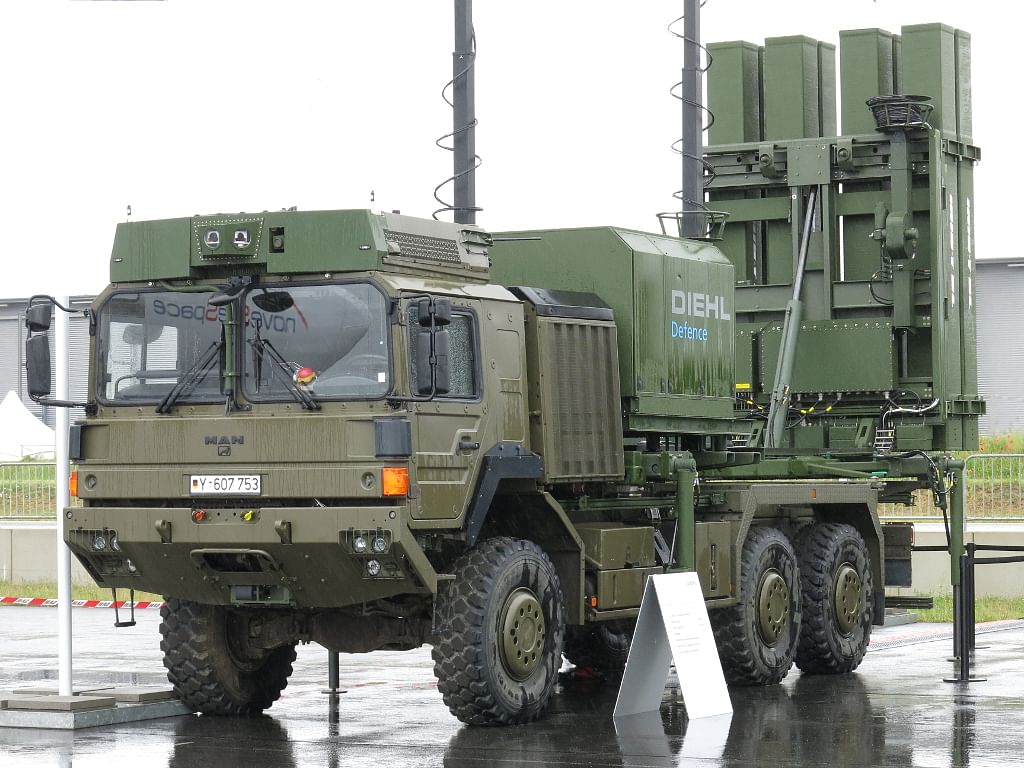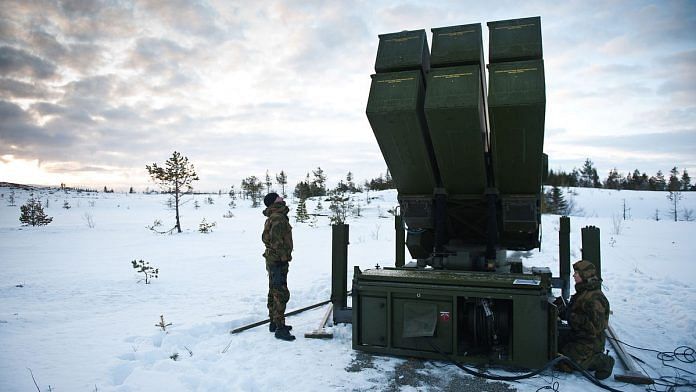New Delhi: Ukraine’s air force has declared that it will soon be equipped to destroy advanced Russian missiles, including the dreaded Iskander, with its latest tranche of Western-supplied air defence systems.
Ukrainian air force spokesperson Yuriy Ihnat told media Friday that NASAMS air defence weapons from the US and IRIS-T SLM from Germany will allow Ukraine to shoot down “even Iskander missiles”, about whose “sniper accuracy” Russia has boasted in the past.
According to the Centre for Strategic and International Studies (CSIS), the Iskanders were first developed by the Soviets in the 1980s to replace the OTR-23 Short-Range Ballistic Missile (SRBM), also known as “Oka”.
Essentially, the Iskander is a road-mobile-tactical SRBM with a range of up to 500 km. It can handle a payload of up to 700 kg, and can fire both cruise and ballistic missiles. The Iskander uses common transporter-erector-launchers (TEL) and support vehicles for firing missiles, explains CSIS.
Iskander refers to both the launch system and its associated missiles. Over time, Russia has developed two variants of the Iskander — Iskander-M and Iskander-E. The E variant is solely meant for export.
Further, with its range, the Iskander over time has become the primary weapon of threat from Moscow to strike Europe, according to experts.
In July, Pentagon officials confirmed that they had started procuring National (or Norwegian) Advanced Surface-to-Air Missile Systems (NASAMS). A month later, the Pentagon announced that they had given a $182 million contract to Raytheon Missiles and Defense for delivery of two NASAMs to Ukraine.
In addition, the German IRIS-T SLM air defence systems are in the process of being supplied to Ukraine, according to the German government.
So, what exactly are these two missile defence systems that it is hoped will make short work of Iskanders?
Also read: Defender to attacker: Ukraine’s counterattacks in Kherson, Balakliya herald new phase in war
NASAMS: A multi-layered shield
NASAMS is a network-centric, short to medium-range, ground-based air defence system. It can simultaneously engage multiple targets which are beyond visual range.
The development of NASAMS began in the 1990s as a collaboration between the American firm Raytheon and the Norwegian defence company Kongsberg Defence & Aerospace.
The key components of NASAMS include the Sentinel Radar (which detects hostile aircraft or missiles and alerts the frontline defence weapons), Advanced Medium Range Air-to-Air Missile (AMRAAM), and a Fire Distribution Centre, which is an air defence and surface-to surface missile (SSM) BMC4I module.
BMC41 is a military acronym for Battle Management Command, Control, Communications, Computers, and Intelligence.
The real-time network system of NASAMS ensures optimal communication between different units, leading to minimal latency during the launch of AMRAAMs, especially over long distances.
According to Raytheon: “NASAMS provides air defenders with a tailorable, state-of-the-art defence system that can maximise their ability to identify, engage and destroy current and evolving enemy aircraft, unmanned aerial vehicle and emerging cruise missile threats.”
Further, its radar and launcher can be deployed at a distance of nearly 20 km from each other, leading to a vast coverage. It is also a highly flexible system which can be used to protect air and army bases, ports, and civilian areas.
IRIS-T SLM: Truck-mounted destroyer
The IRIS-T SLM is a surface-to-air missile system which was first showcased by German arms manufacturer Diehl Defence in 2014. It can be transported on road and is truck-mounted.
It’s essentially an upgraded version of the IRIS-T air-to-air missile, with new-and-improved features including a “a streamlined nose section”, which has led to enhanced range and altitude. The IRIS-T SLM can strike targets that are at a distance of 40 km and up to an altitude of 20 km.

Like NASAMS, it can track multiple targets simultaneously and take down air-borne vehicles and weapons, ranging from drones and helicopters to guided bombs and missiles.
Another key feature, according to reports, is that the IRIS-T SLM missiles have infrared (IR) seeker heads that are interference-resistant. The system is also enabled with radio command guidance, and satellite correction systems, and also has digital signal processing which can counter decoy flares and enemy electronic attacks.
The missile is launched at its target through a data link. When the IRIS-T SLM is near the target the infrared seeker is most vital. At close proximity, the infrared seeker identifies the target and ensures an accurate strike. This also coincides with the “terminal phase of the engagement”, which is essentially when the missile’s payload re-enters the atmosphere.
(Edited by Asavari Singh)
Also read: Ukraine’s munitions might be coming from unlikely source — Russia’s new friend Pakistan



